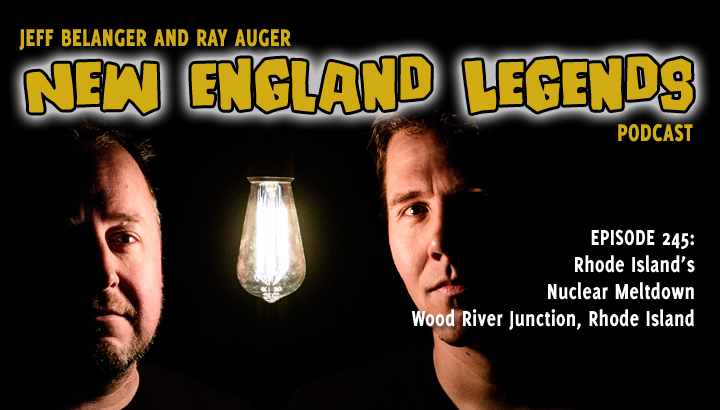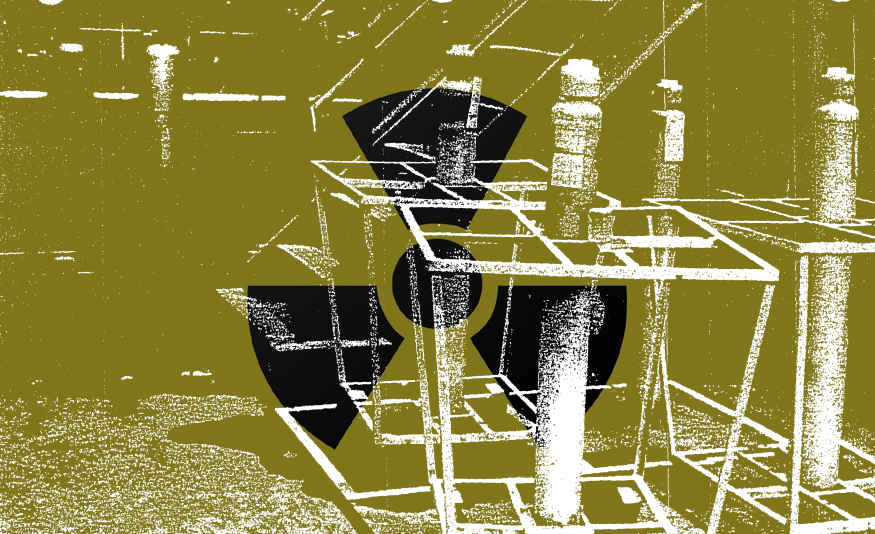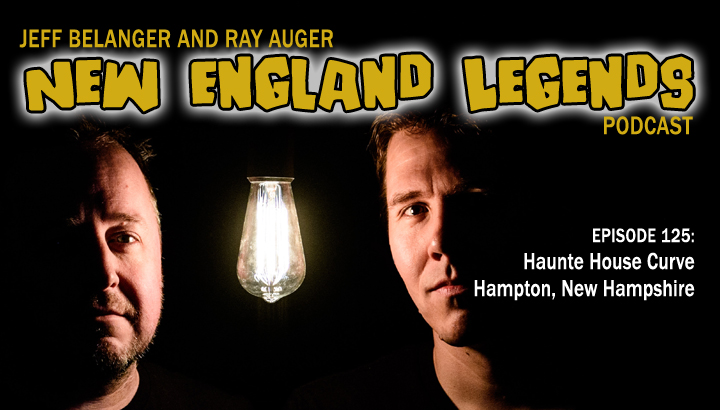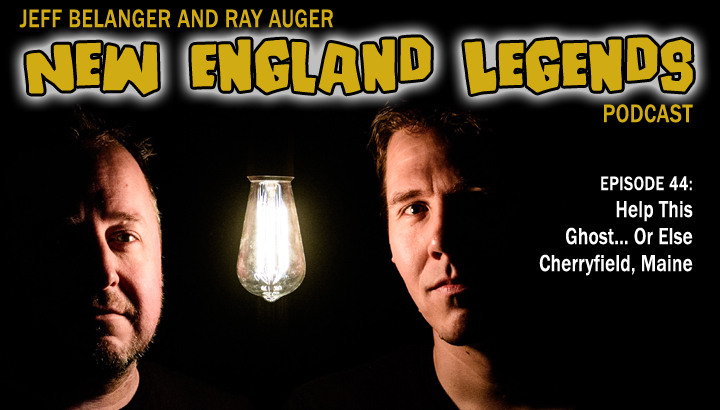

Nuwati Herbals is the proud sponsor of this episode of New England Legends! Use promo code: LEGENDS20 to save 20% off at checkout.
In Episode 245, Jeff Belanger and Ray Auger explore the July 24, 1964 nuclear incident in Wood River Junction, Rhode Island, that left 37-year-old Robert Peabody dead. Peabody remains the nation’s first fatality due to acute radiation syndrome at the United Nuclear Corporation Fuels Recovery Plant.
CALL (OR TEXT) OUR LEGEND LINE:
(617) 444-9683 – leave us a message with a question, experience, or story you want to share!
BECOME A LEGENDARY LISTENER PATRON:
https://www.patreon.com/NewEnglandLegends
CREDITS:
Produced and hosted by: Jeff Belanger and Ray Auger
Edited by: Ray Auger
Theme Music by: John Judd
SUBSCRIBE TO THE PODCAST FOR FREE:
Apple Podcasts/iTunes | Google Podcasts | Spotify | Pandora | Stitcher | Amazon Podcasts | TuneIn | iHeartRadio
JOIN OUR SUPER-SECRET:
New England Legends Facebook Group

The 11-liter radioactive containers from the United Nuclear Corporation Fuels Recovery Plant.
EPISODE TRANSCRIPT:
*A note on the text: Please forgive punctuation, spelling, and grammar mistakes. Like us, the transcripts ain’t perfect.
JEFF: Ray, these are scary times.
RAY: They always are. But what are you referring to specifically?
JEFF: Russia’s war with the Ukraine is pretty frightening. There’s talk of Russia potentially using nuclear weapons against the people of Ukraine or even other countries. It’s awful watching helplessly from afar.
RAY: I get that. Lately it feels like we’re on the edge of World War III. But I don’t suppose we came to the southern Rhode Island town of Wood River Junction to talk about nuclear war.
JEFF: No. We came to the small town of Wood River Junction to talk about nuclear meltdown.
RAY: What do you mean?
JEFF: Wood River Junction has the unfortunate distinction of being the site of the nation’s first fatality due to acute radiation syndrome.
[INTRO]
JEFF: Hi, I’m Jeff Belanger, and welcome to Episode 245 of the New England Legends podcast. If you give us about fifteen minutes, we’ll give you something strange to talk about today.
RAY: And I’m Ray Auger, thanks for joining us on our mission to chronicle every legend in New England one story at a time. From weird history, to strange haunts, to out-of-this-world encounters, we explore the stories that have left a permanent mark on our region. We’re glad you’re riding along with us. We’re a community, and we count on you to help spread the word about what we do. Great things happen when you share these stories. We connect.
JEFF: Before we grab our Geiger counters and go looking for nuclear fallout in Wood River Junction, Rhode Island, we want to take just a minute to tell you about our sponsor, Nuwati Herbals!
RAY: Jeff, have you ever had one of those weekends where you had maybe a few too many drinks, too much junk food, and too many sweets?
JEFF: I rarely DON’T have weekends like that.
RAY: Come Monday, I turn to Toxaway tea by Nuwati Herbals. Toxaway Tea has a blend of green tea leaf, fennel seeds, orange peel granules, rhubarb root, ginger root, juniper berries, and so many other herbs and other all-natural ingredients that help me cleanse from the inside, and get back on a healthy track.
JEFF: And since we’re cleaning out, I also reach for Nuwati Herbal’s Calming the Storm Tea. Like Toxaway, and really all of their teas and products, the all-natural ingredients help get my stomach and guts back on track after an over-indulgent night… or weekend.
RAY: Not only do these teas taste great, and make me feel good, I love saving money making these warm treats at home instead of hitting the drive-through for those expensive, over-sugared coffees.
JEFF: Let Nuwati Herbals help support your healthy lifestyle. Check out the Nuwati Herbals Web site to see all of their great products AND you get 20% off your order when you use the promo code LEGENDS20 at checkout. Visit Nuwati Herbals dot com. That’s N-U-W-A-T-I Herbals with an S dot com.
RAY: Okay, Jeff. There was a nuclear disaster in Rhode Island?
JEFF: There was, and it included a fatality.
RAY: How could I have never heard of this before?
JEFF: It’s one of those stories that’s been almost lost.
RAY: Usually nuclear disasters make international headlines. We never forget them.
JEFF: That’s true!
RAY: I know America has the Three Mile Island disaster.
JEFF: Yup, that took place in Middletown, Pennsylvania, in 1979.
RAY: There was Fukushima in Japan a few years ago.
JEFF: Right. That was in 2011, when a tsunami took out the power supply to the plant and triggered a meltdown.
RAY: Then there’s the Chernobyl disaster.
JEFF: That one was the worst of all. Back in 1986. It happened in the Ukraine back when that country was still part of the Soviet Union.
RAY: And there was a nuclear accident in Rhode Island too?
JEFF: There was. Grab your radiation suit, Ray. We’re going back to the summer of 1964.
[TRANISITON]
RAY: It’s Friday, July 24th, 1964 here in Wood River Junction, Rhode Island. Lyndon B. Johnson is president of the United States. The Space Race with Russia is in full swing, with each country sending up rockets and satellites. It’s a time of innovation. In fact, one could argue the two hottest industries to work in right now are the space program and the nuclear program.
JEFF: Nuclear energy holds quite a promise! Using nuclear reactors, enormous amounts of energy are produced, and the only emission from the huge stacks is steam. No pollution, just clean energy.
RAY: Of course, there’s the nuclear waste, but IF handled correctly, there shouldn’t be a problem.
JEFF: The space race also includes a new kind of weapon: Intercontinental Ballistic Missiles. ICBMs. These rockets can carry a nuclear weapon thousands of miles from one continent to another, and kill untold amounts of people quickly.
RAY: Like we said. An exciting time.
JEFF: It is. People like 37-year-old Robert Peabody of Charlestown, Rhode Island, know working in the nuclear industry can offer him the kind of advancement and income he needs to provide for his wife and nine children. His oldest is 16 years, and his youngest is six months. In fact, next week, two of his kids have birthdays.
RAY: Peabody works during the day as an auto mechanic, and he works as a production operator from 4:00 PM to midnight at the United Nuclear Corporation Fuels Recovery Plant in Wood River Junction. It’s only a five-minute commute from his home.
JEFF: A little more about United Nuclear Corporation Fuels Recovery. The building is located on 1,200 acres of land bordered by the Pawcatuck River. Using the latest technology, the plant processes uranium scrap from either spent fuel rods from reactors, or from other nuclear manufacturing processes, and runs them through a series of processes to recover enriched uranium that can then be used again.
RAY: The facility opened about four months ago, and it’s important to note that there’s no nuclear reactor here. It’s mostly an assembly line, where the spent fuel rods and other materials go through a chemical process over and over until what’s left is waste, the chemical solution, and the enriched uranium.
[FACTORY ASSEMBLY LINE]
JEFF: Seeing this factory in action is actually not very interesting. It looks almost like some kind of bottling facility. But then you have to remind yourself that some of this stuff is highly radioactive material. The stakes are higher. If a spill happens, people can get hurt, and even die.
RAY: It doesn’t take many workers to run the assembly line here. There’s a security guard to make sure no materials leave the building that aren’t supposed to, and only authorized personnel enter. There are two other plant technicians besides Peabody, then there’s the supervisor. Those are the only people here for this Friday evening shift.
JEFF: Everyone has been on edge this week. Two days ago, Peabody was washing equipment on the second floor when a radiation alarm sounded. He and the four other people working that night ran from the building, as they’re supposed to. Outside they waited, but no other alarms went off, which means either the radiation problem was highly contained, or it was some kind of false alarm. They grabbed their Geiger counters, and soon learned there was no radiation at all. Water had splashed on one of the electrical contacts related to the alarm and set it off.
RAY: Then last night, there was another problem. Some kind of black goo began appearing near the end of the processing line. It’s some kind of organic compound. It’s not triggering any radiation alarms, but it IS gumming up the works. Last night they had to shut down the entire plant and clean out all of the lines.
JEFF: So now they have various containers, each holding liquid that’s radioactive to varying degrees. Some of the containers are barely radioactive, others are highly radioactive. It all depends on which part of the process they were taken from. Tonight’s objective is to get them all back on track through the chemical scrubbing process.
RAY: Each of the bottles is labeled to identify the contents, and the labels are held on with rubber bands, because not much sticks to these bottles.
JEFF: The bottles that hold the radioactive liquid are 11-liter, five-inch diameter bottles that are almost four feet long. The containers must be stored away from each other because if they’re too close, the radioactive material can react through the plastic. If too much of the highly-concentrated uranium was in the same container, say a larger one, it could create an uncontrolled atomic reaction called a nuclear excursion.
RAY: Nuclear excursion? That sounds like some kind of futuristic side-trip.
JEFF: It does. But not a pleasant one. Picture a mini nuclear meltdown with radioactive material splashing everywhere. Touch it, get to close to it, breath in the vapors… and you die a horrible death.
RAY: So this is the kind of job you have to take seriously.
JEFF: You do. Your own life and that of your coworkers depends on it. Arguably the lives of people in nearby towns could depend on it too! So there are processes and controls in place to make the job as safe as possible. One of the processes involves scrubbing the uranium with trichloroethane, which is common dry-cleaning solution. You put this chemical in the 11-liter container with the uranium, then you add in sodium carbonate. The whole things weighs about 35 pounds. And then…
[SHAKING LIQUID]
JEFF: Then you have to shake the whole thing up.
RAY: Shake it?!
JEFF: Shake it. For 20 minutes.
RAY: Isn’t that dangerous?
JEFF: I know it sounds scary, but this is the lower-level radioactive material. And what happens is the trichloroethane scrubs the uranium of oils and grime, and then the uranium bonds with the sodium carbonate. After the shake, the sodium carbonate and uranium sink to the bottom of the container, the oils and grime float to the top, and the middle is the cleaning solution.
RAY: Even if it’s safe, shaking something that weighs 35 pounds for 20 minutes isn’t easy.
JEFF: It’s not. But earlier this week, another worker came up with the idea of pouring this mixture into a stainless steel mixer they have on the third floor. It basically looks like a giant milkshake machine. You can pour the mixture in there, and let the machine do the work.
RAY: The supervisor on duty oversaw the operation earlier this week. He figured they’re using low-radioactive materials anyway, so there was little danger. Another supervisor on another shift protested, but he was talked out of his objections. Using the large stainless steel mixer is deemed safe, and it makes the job a lot easier.
JEFF: So Robert Peabody and his coworkers have to clear out these large, 11-liter containers from the stoppage last night. There’s many to get through, so Robert grabs one of the containers holding bright-yellow liquid, and he carries it up to the third floor mixer.
[WALKING UP STEPS]
JEFF: Peabody adds some sodium carbonate solution into the mixer…
[GLUG GLUG GLUG]
JEFF: And turns on the machine.
[MIXING MACHINE]
RAY: Okay, Robert is removing the lid from the container of the bright yellow liquid…. Annnd, now he’s lifting the 35-pound container. He’s resting the top part on his forearm so he can pour the contents in the mixer.
[GLUG GLUG GLUG]
RAY: Okay, the liquid is dumping into the mixer….
[HISSSSS STEAM]
JEFF/RAY: Oh no… Something seems wrong….
JEFF: The liquid in the mixer is glowing a strange bluish color.
[FIRE ALARM BELL]
[MUFFLED SCREAM OF ROBERT]
RAY: That blue liquid is shooting out of the mixer! It just hit the ceiling!
JEFF: Robert just dropped the container into the mixer, and he’s fallen over backward onto the floor.
[OTHER BELL/ALARMS]
JEFF: Those bells are radiation warnings. This is NO false alarm.
[RUNNING]
RAY: Robert is leaping to his feet and running for the door! He knows what just happened. The mixture in the vat just went critical. Which means he just poured the wrong bottle into the mixer. He must have grabbed a bottle of the highly concentrated uranium mixture instead of the lower level container.
RAY: Robert is running for the door as fast as he can. But he’s also aware… that he’s a dead man.
[DOOR OPENS / ALARMS FADE]
RAY: Robert is tearing off his clothes as he sprints toward the facility’s emergency shack 450 feet away from the building.
JEFF: His coworkers are close behind him now. The heard the alarms, and now that they see Robert tearing his clothes off and running, they know this is no drill. Something terrible has just happened.
RAY: Robert is naked by the time he reaches the emergency shack. Some of the radioactive material was on his clothes, and though he knows it’s already too late, he stripped them off quickly as he could. Now lying on the floor of the shack, he’s vomiting, and he’s starting to bleed from his nose and ears.
JEFF: This is awful! His coworkers are covering him with a blanket.
[AMBULANCE SIREN]
JEFF: It’s 7:00 PM when the ambulance arrives. Robert is taken to Westerly Hospital first, but they have nothing in place to treat someone poisoned by radiation. So he’s brought to Rhode Island Hospital in Providence. It’s 7:45 when they arrive.
RAY: Robert Peabody is in bad shape. He’s violently sick. His body is cramping from the radiation, and though Rhode Island Hospital is the best equipped in the region, it’s not like they see this kind of injury every day. Hospital staff scramble to create an isolated room within the hospital.
JEFF: Robert’s wife and oldest son are summoned to the hospital by state police. They’re only allowed to stand at the foot of his bed, and only for a few minutes, because his entire body is radioactive. Robert tells his son that someone put a bottle of uranium where it wasn’t supposed to be.
RAY: And now Robert’s left hand is swelling up like a balloon. That was the hand that was directly exposed to the radioactive liquid. Doctors saw off his wedding ring before it ruptures his skin. A Geiger counter brought to the hospital reveals that Robert’s wedding ring is now highly radioactive, and must be disposed of.
JEFF: Doctors have no way to treat Robert’s radiation poisoning, they can only try to manage his pain and symptoms. It’s Sunday morning when it becomes clear that his body is shutting down. He’s dying at the cellular level. No visitors have been allowed to see him since Friday night. His body is so badly contaminated that he’s going to have to die alone. By Sunday night, Robert passes away. And that brings us back to today.
[TRANSITION]
RAY: What a tragic experience. It’s heartbreaking.
JEFF: It is. After Robert Peabody was brought to the hospital, his co-workers went back inside wearing protective gear and carrying Geiger counters to contain the spill. The mixer on the third floor was still running, but stable. However, once they turned it off, the material that had been spun to the sides of the container started to slide down to the bottom causing a second nuclear excursion.
RAY: Thankfully, this was a smaller reaction than the earlier one, and the men were able to get out before they were contaminated. But consider this: some of them had coins in their pockets. You know, some loose change. Those coins were now radioactive because the metal had absorbed the radiation.
JEFF: A terrible event for sure. The best they can figure as to what went wrong is that each container of material had a label on it held on by a rubber band. The best guess is that the label from the lower-radioactive material was mistakenly placed on the highly radioactive material, and Robert Peabody grabbed that mislabeled container by mistake and carried it up to the mixer.
RAY: As for a settlement, the Peabody family received $22,000 dollars from the United Nuclear Corporation Fuels Recovery plant. Not much considering Robert had a wife and nine children. Weeks after her husband’s death, Anna Peabody was given what she was told were her husband’s ashes. But she didn’t believe it. She believes her husband’s body was taken away for studying somewhere.
JEFF: The Atomic Energy Commission eventually found the company in violation of 14 safety regulations. The Wood River Junction plant was shut down for decontamination, but reopened in February of 1965. The plant ultimately closed for good in 1980.
RAY: The Nuclear Regulatory Commission considers Robert Peabody the U.S. nuclear industry’s first and last fatality due to acute radiation syndrome.
JEFF: Due to fears of accidents and meltdowns, combined with cheap oil, the nuclear industry sort of ground to a halt in the 1980s. The promise was great! But when something goes wrong, the downside of nuclear disasters is catastrophic.
[OUTTRO]
RAY: Radiation poisoning seems like it would be the worst death imaginable.
JEFF: It does, which makes the threat of nuclear weapons that much more frightening.
RAY: That brings us to After the Legend, where Jeff and I take a deeper dive into what these stories mean. After the Legend is brought to you by our Patreon Patrons!
JEFF: This legendary group of people are in the inner circle. They help us out with our hosting, production, and marketing costs. Basically everything it takes to bring you a new story each week.
RAY: For just $3 bucks per month you’ll get early access to new episodes, plus bonus episodes and content that no one else gets to hear. Just head over to patreon.com/newenglandlegends to sign up.
We’d like to thank our sponsor, Nuwati Herbals, thank you to our patreon patrons, and our theme music is by John Judd.
Until next time remember… the bizarre is closer than you think.



